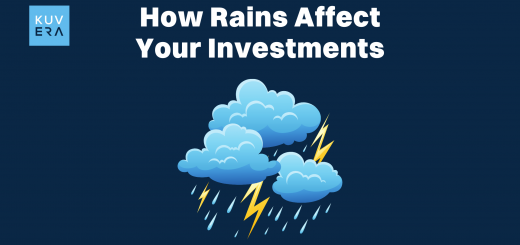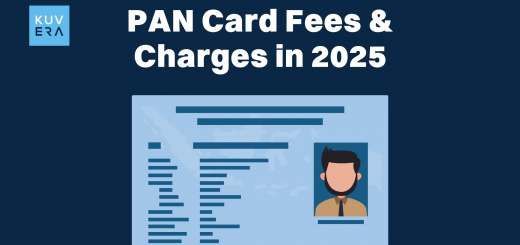An investment portfolio is a collection of various investment instruments, such as stocks, mutual funds, shares, cash, bonds, insurance, etc., based on the investor’s income, budget, and investment horizon.
Portfolio management is the method of selecting the most suitable forms of investment for an investor in terms of the lowest risk and highest returns possible. It is a skill to manage a person’s investments in a way that will allow him to maximise returns over the course of the desired investment horizon. Another meaning of portfolio management is the practice of managing a person’s investments under the direction of knowledgeable portfolio managers. Portfolio managers construct and manage investment allocations for customers. In addition, they may work according to specified investment plans that they develop to fulfil the client’s financial goals.
Objectives of Portfolio Management
The primary objective of portfolio management is to invest in a manner that maximizes returns while avoiding risks in order to achieve financial objectives. A few of the main objectives are:
- Capital appreciation: Capital appreciation is the primary objective of portfolio management. Additionally, it should minimize risks like market volatility.
- Frequency of income generation: While some investors choose to get a consistent stream of dividend income, others may prefer to receive a larger maturity corpus in the form of capital appreciation. These factors are generally taken into account while creating a portfolio by a manager.
- Tax planning: It is upsetting to earn substantial profits yet be unable to keep them due to inadequate tax preparation. Different assets are taxed in different ways. Consequently, a portfolio manager should consider tax regulations while allocating assets in order to assist investors in better tax planning while preventing tax evasion.
- Liquidity: Managing liquidity is another crucial aspect of portfolio management. It provides investors with instant access to funds for an emergency, expense, new venture, portfolio rebalancing, etc. Investing in a well-balanced mix of listed and unlisted shares is important because the former has more traceability than the latter.
- Investment safety: Above all, portfolios should be built with the investor’s risk tolerance in mind. The allocation of funds should prevent the investor from incurring losses that they cannot afford. Ultimately, one of the main goals of portfolio management is to reduce risk.
- Diversification: There is no such thing as zero risk. In other words, no risk, no reward. Therefore, reducing risk is one of the ways to earn the highest returns, which may be accomplished through diversification.
Key Elements Of Portfolio Management
Some of the key elements of portfolio management are:
- Asset allocation: Effective portfolio management involves a well-considered asset allocation that takes into account the financial objectives and risk tolerance of the investor. Asset allocation is the process of distributing funds among several asset classes, including stocks, bonds, real estate, and commodities.
- Diversification: This refers to investing across various asset classes and investment avenues that have a low correlation with one another. Diversifying the investments over a variety of instruments provides a broader exposure and captures the returns of multiple asset classes and sectors over time.
- Rebalancing: This involves many strategies, a few of them like selling expensive stocks and investing the proceeds in undervalued securities or making a risk-minimization move to stop the fall in portfolio value and direct money to more effective performers. This helps maintain the initial risk-return profile while also enabling the client to achieve financial gains.
Types Of Portfolio Management
A few types of portfolio management:
- Active portfolio management: It takes a significant level of stock market knowledge to manage a portfolio in this way. The manager of such a portfolio frequently buys and sells stocks in order to outperform the broader market (indices). The tactic is referred to as “active” since it necessitates regular market analysis in order to spot undervalued assets, purchase them, and then appropriately sell them. The procedure involves proactive quantitative analysis, diversification, and knowledge of business cycles.
However, active portfolio management generally has high costs because the fund manager employs a risky investment approach that requires constant monitoring and asset turnover. As a result, this is most suitable for seasoned investors with higher risk tolerance.
- Passive portfolio management: This kind of portfolio management focuses on investing for the long term. Passive portfolio managers try to replicate market returns. Passive portfolio management differs from its active counterpart in that its objective is not always to actively outperform the market over the long run. Due to this, passive investing is a good choice for those who want to reduce risk while generating steady returns. Investors that desire to limit their exposure to risk frequently prefer passive strategies.
- Discretionary portfolio management: With discretionary portfolio management, the portfolio manager has full authority to make choices and buy/sell securities on the client’s behalf. This sort of portfolio management is appropriate for investors who do not wish to directly participate in the investment strategy. However, much like with active portfolio management, these managers charge substantial fees for their high-quality services.
- Non-discretionary portfolio management: Non-discretionary portfolio management involves counselling clients on the suitability of an investment. This manager is merely a financial advisor and does not execute transactions on the investor’s behalf. Aside from professional advice, the clients are in complete control of their investments.
Process Of Portfolio Management
Here are a few crucial steps in the portfolio management procedure:
- Planning is the first step in the portfolio management process. This is the first and most important phase because it establishes the framework for the entire procedure. The process of planning out here requires the determination of objectives and limitations. The investment objectives are assessed in the planning step itself, along with any desired outcomes the customer may have in terms of return and risk.
- The Investment Policy Statement (IPS) is the second and maybe most significant step in the portfolio management process. After the objectives and limitations are established, the investment policy statement is created. The IPS outline the general parameters of the investment plan as well as its limitations.
- The third step of the portfolio management process is establishing capital market expectations. At this step, portfolios are selected by estimating the long-term risk and return of various asset types. It is necessary for portfolio decisions to be optimal in the sense that they must either maximize returns for a given level of risk or reduce the risk for a given level of return.
- The next important stage is asset allocation. Now, asset allocation can be strategic, tactical, or a combination of the two, which is generally the case. This is an important step in the portfolio management process. The long-term weights of target asset classes are typically determined by combining capital market expectations with the investment policy statement, or IPS, in strategic asset allocation. This allocation is strategic in nature.
- The next step is tactical asset allocation, which involves a short-term adjustment in portfolio strategy as a result of an investor’s changing circumstances or shifting market expectations.
- The next phase of portfolio management is execution. The first step in the execution process is portfolio selection. At this point, the planned investment allocation strategy is linked to the expectations of the capital markets. Next, certain assets are selected.
- Portfolio implementation is the final step in the execution phase of the portfolio management process. Actual investments are made through mutual funds or direct stocks, depending on the situation. At this point, the emphasis is on execution efficiency, timing, low transaction costs, and tax effectiveness.
- The administration of a portfolio is not a one-time event but a continuous process that requires continual client participation. The subsequent step in the process of portfolio management is monitoring and rebalancing. At this point, the portfolio manager keeps track and evaluates the portfolio’s risk exposures, contrasting them with the planned asset allocation. Transaction fees and taxes should be taken into account while rebalancing a portfolio.
- Performance evaluation constitutes the final phase of the portfolio management process. The success of investments, as well as the expertise and contribution of the portfolio manager, must be constantly assessed. For this evaluation of the fund management, it is appropriate to consider both absolute and relative returns.
Advantages Of Portfolio Management
- Investment decisions: An investor can choose the ideal portfolio of assets with the help of portfolio management. It permits more educated investment plan decisions in accordance with the identified aims and objectives.
- Maximizes return: One of the primary functions of portfolio investment is to maximize the return. It offers a well-structured framework for analysis and choosing the optimum asset class.
- Avoids disaster: Portfolio management avoids the disaster of facing huge risks by investors. Rather than investing exclusively in a single asset class, it suggests investing in a variety of asset classes. If an investor exclusively invests in one form of security and it fails, the investor will suffer significant losses that could have been averted if he had spread his funds over a variety of assets.
- Track performance: Portfolio management assists investors in monitoring the success of their investment portfolio. A consolidated investment held inside the portfolio may be evaluated more effectively, and any failures can be readily identified.
- Manages liquidity: Investors can set up their investments in a systematic manner with the help of portfolio management. Investors might choose their assets in a way that will make it simple for them to sell some of them whenever they need money.
- Reduces risk: The volatility of the security market sometimes raises the risk of incurring a loss while investing in securities. Through the diversification of risk among numerous entities, portfolio management helps in risk reduction.
- Improves financial understanding: It helps investors improve their financial knowledge. While managing their portfolio, individuals encounter several financial concepts and learn how a financial market operates, thereby enhancing their financial literacy.
Frequently asked questions (FAQs)
-
What is the process of portfolio management?
The aim of portfolio management is to develop an appropriate investment strategy by talking about an investor’s financial objectives, risk tolerance, return expectations, and other personal information. Meeting the objectives of the investor also involves distributing assets among various asset classes in order to reduce risk and maximize profits. The portfolio manager keeps track of the investments’ performance and can rebalance them to maximize returns.
-
Who Should Opt for Portfolio Management?
Portfolio management should be taken into account for the following:
- Investors who want to invest in a variety of investment instruments, such as bonds, equities, funds, commodities, etc., but who lack adequate expertise in the process.
- Those with a limited understanding of the investment market
- Investors who are unaware of how market dynamics affect returns on investments
- Investors who lack the time to monitor their investments or rebalance their investment portfolio.
- Individuals must use strategies that match their financial goals and prospects in order to maximize the managerial process.
-
Why is portfolio management important?
Portfolio management services provide investment management on behalf of an individual or company. They assist investors in achieving their long-term financial objectives by generating wealth. Depending on the style of it, some managers can execute transactions for investors, while others can only advise on the feasibility of investment. Investors can profit from a manager’s market expertise through fund management. Investors might be able to effectively accomplish their long-term financial goals by maximizing returns and minimizing risks with assistance. In the end, it aids in maintaining financial stability, generating wealth, and achieving financial security.
-
What are a few important factors to consider while managing a portfolio?
Portfolio management selections are primarily influenced by four factors: an investor’s objectives, the level of assistance required (if any), the timeline, and risk tolerance.
- Investor’s objectives: Your savings objectives, such as retirement, a home renovation, a child’s education, or a family trip, define the amount of money you need to save and what investment strategy and account type will help you achieve your goals.
- Assistance required: Some investors might choose to make all of their investment decisions on their own, while others would be content to delegate that responsibility to a portfolio manager. A portfolio manager provides tailored portfolios in addition to additional services like financial planning.
- Timeline: Your timetable might assist you in determining whether you should adopt an aggressive or prudent investing approach.
- Risk tolerance: Another important factor that influences investor decisions about diversification is their level of risk tolerance. The potential reward increases with the level of risk you’re ready to take; high-risk investments typically have larger returns over the long run but may experience more short-term volatility. The objective is to choose investments that will help you achieve your goals while also striking the correct risk-reward balance.
Interested in how we think about the markets?
Read more: Zen And The Art Of Investing
Watch/hear on YouTube:
Start investing through a platform that brings goal planning and investing to your fingertips. Visit Kuvera.in to discover Direct Plans and Fixed Deposits and start investing today.
#MutualFundSahiHai #KuveraSabseSahiHai!











